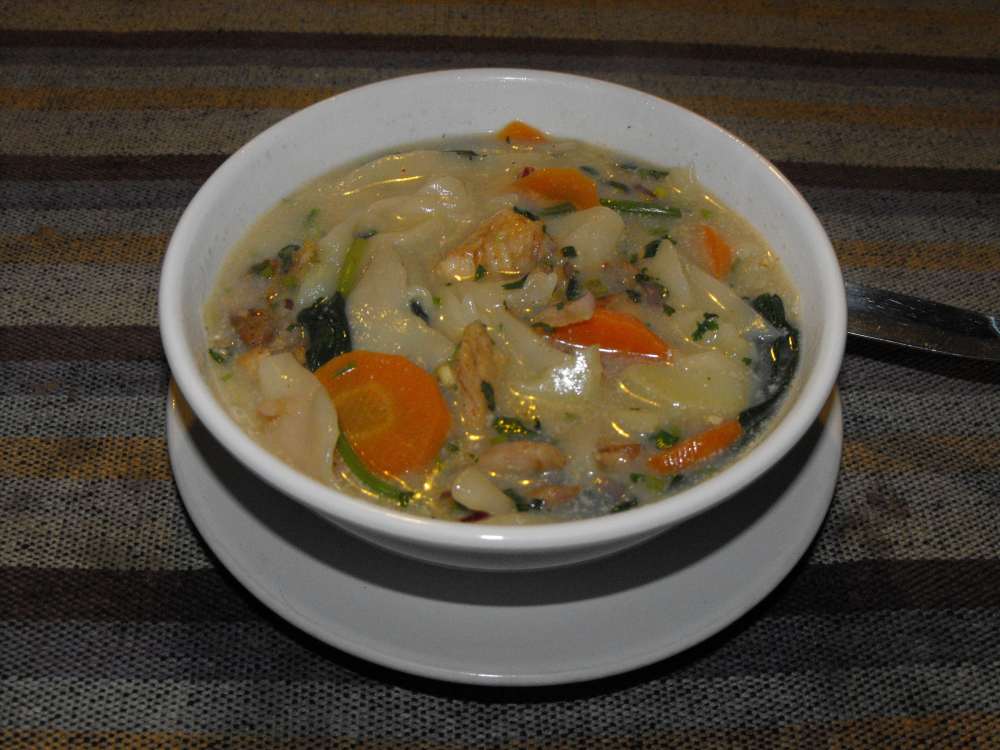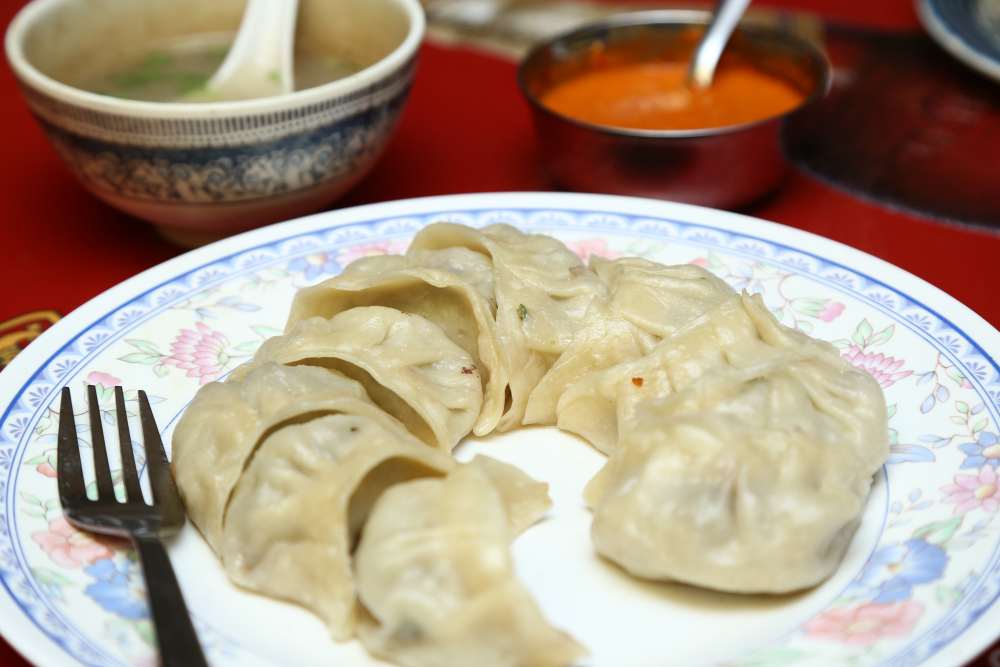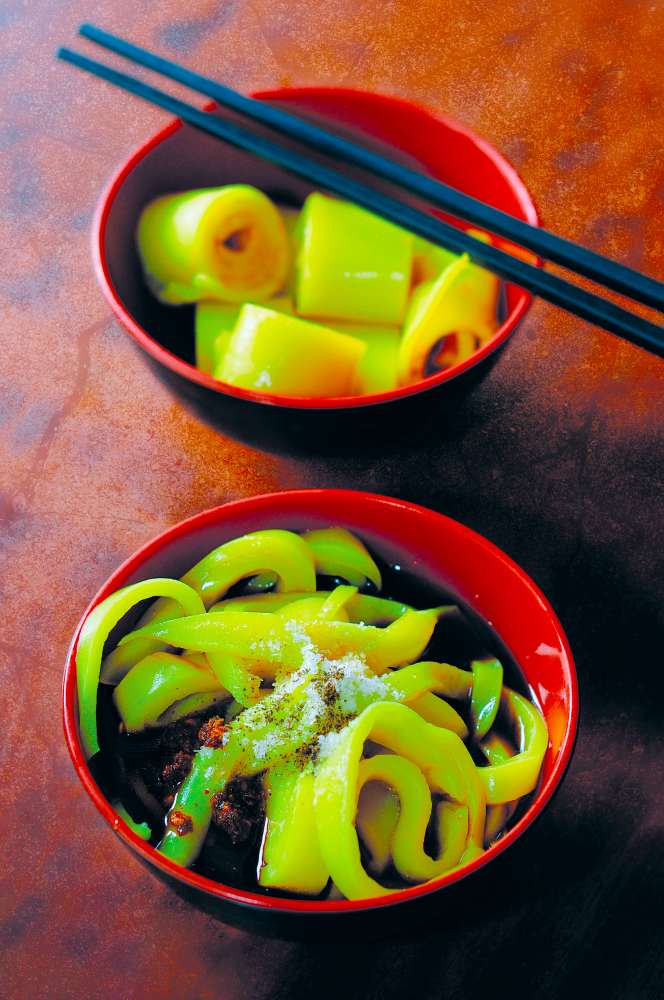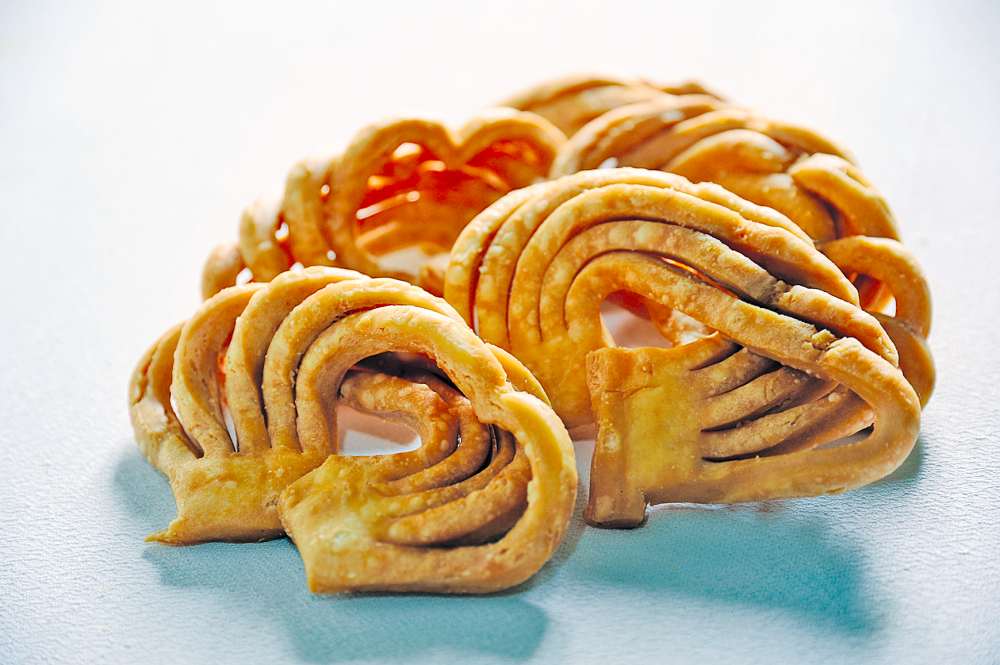Do note, if you’re hunting for these goodies on a menu, the spelling of nearly everything on this list may vary wildly depending on where you find it.
Shafaley
What is it? A delicious, flat, fried savory pie, generally stuffed full of meat—think chicken or buff.
Tell me more… They are generally either circular or half-circles with curly crimped edges, fried to a luscious shade of golden brown. The meat is lightly spiced, the dough is crunchy, and some good spicy achaar should be provided for dipping purposes. Delicious with beer, or just about anything. Shafaley are also good as a snack and hand food, as they are wrapped up tight, so shouldn’t leak, and can be equally delicious eaten cold later.
Thenthuk
What is it? A thick soup with handmade noodle strips, vegetables, and meat, if you desire.
Tell me more… Pretty much everyone has eaten thukpa, but I’m always surprised that when I start waxing lyrical about thenthuk, I get confused looks from about half my friends. So, thenthuk is like thukpa, only in my opinion, better. The noodles are fashioned from a home-made dough that’s sliced or pinched into strips or squares. Somehow, the broth always seems to be thicker and more flavorful—I’m not sure if this is caused by the delicious dough or other factors, but it makes for a perfect warming winter bowl of yumminess. Chicken thenthuk is a particular favorite, but a vegetable-only bowl will hit the spot, too.
Tingmo

What is it? Also known as ting momo, it can be described as a large steamed bun.
Tell me more… Often referred to as Tibetan bread, they are significantly larger than regular momo, about the shape of your fist. They have a light, soft, fluffy texture and are best eaten warm, dipped into whatever ever else you happen to be eating—soup, curry, or a good achhar.
Momo
What is it? Well, everyone knows what momos are, so we almost didn’t include it here, but…
Tell me more… No description of everyone’s favorite fast-food is really necessary, yet we’d be remiss if, in a round-up of good things to eat in Boudha, we didn’t mention that you can get the delicious steamed dumplings known as momo pretty much anywhere. Make sure you select a place with tasty achhar, and, preferably, a bowl of piping hot broth as an accompaniment.
Laphing
What is it? Laphing is a cold noodle dish seasoned with spices.
Tell me more… The thick, chewy noodles are made of either flour or potato starch, cooked overnight, and left to set. When it’s ready, it’s sliced into the familiar noodle shape and ready to be enjoyed with a dipping sauce—usually vinegar and dried chilies. People usually think of spice and jhol when they think about laphing, but many folks don’t know there are dry and un-spicy laphings for the less spicy people, as well. Not only this, many also don’t know there is wai wai laphing available in the market, too.
Khapse
What is it? A crunchy-fried tasty snack treat.
Tell me more… Khapse has been called “Tibetan cookies”, but that isn’t entirely accurate. It is sweet and crunchy, though, and amazing dipped in a glass of tea. Traditionally prepared during Losar, the Tibetan New Year, we’re glad to report that it can now be found year-round, either in shops, or piled in tantalizingly and oft-precarious looking stacks around the stupa area. The dough is fashioned into various sized strips and shapes, often twisted, before being deep-fried and enjoyed by its fans.
Chinese food

What is it? Well, it’s Chinese food!
Tell me more… The alleys and nooks that ring the stupa are filled with little and big eateries, many of which serve a sort of hybrid Chinese-Tibetan cuisine. It’s not unusual to see the above-mentioned tingmo aside a steaming bowl of spicy, delicious hot-pot style Chinese soup. These local places tend to be filled with a varied mix of local residents, Tibetan monks, and tourists from all over the place, enjoying themselves and the connection that food can bring.
















